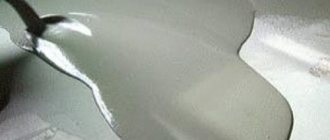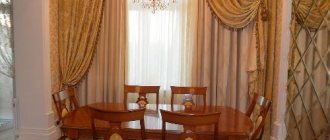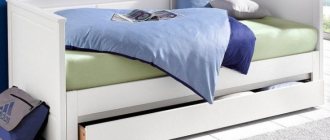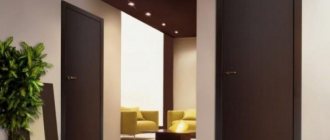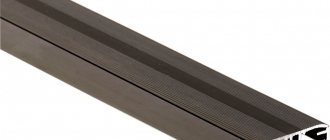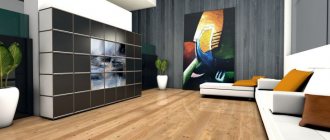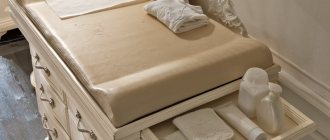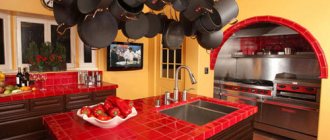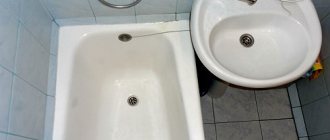As a rule, renovations in an apartment begin with replacing wooden floor coverings. More often than not, this all happens to be a solid wood floor. Of course, you can opt for porcelain stoneware or laminate. However, it is the wooden floor that has been and remains the most popular type of finish.
A properly chosen solid wood board will last a very long time and will require minimal maintenance. This is a natural material that can make any floor beautiful and comfortable. Therefore, you need to pay attention not only to the appearance, but also to the quality of this board.
Types of solid boards and their application
There are three main types of solid flooring boards:
- The most expensive and highest quality is the radial board. The main material for its production is oak. Most often this board is used in luxury interiors.
- When tangentially cut, a skeletal floor board is obtained. It has a uniform color and a clear wave-like pattern of annual rings. This type of floor covering belongs to the middle price category. This makes it the most popular.
- Natural This massive board may have knots and is characterized by sharp changes in color. According to its characteristics, it belongs to the most natural type of wooden floor. It can be safely used in an interior made in country style.
Massive board. Main varieties
In the production of solid flooring boards, exclusively natural wood is used. Outwardly it resembles parquet. Even the installation methods are similar. The groove-tenon fastening system allows you to obtain strength when connecting boards. Sometimes connecting boards using special brackets is used.
Of course, the price of a solid floorboard directly depends on the type of wood from which it is made. So, for rooms with high air humidity, it is best to finish the floors with boards made of oak or teak wood. An equally important characteristic of solid flooring boards is its strength and thermal insulation. They depend on the thickness. As a rule, the thickness of the board ranges from 100 to 200 mm. The length ranges from 500 to 3000 mm. When finishing rooms with a large area, 6-meter boards are often chosen.
Main varieties of solid boards:
- The highest grade includes floor boards, the surface of which is free of damage and knots. In principle, this is a completely finished floor. To protect the surface of a wooden floor, use water-based varnish or special wax.
- A first grade board may have a small number of small knots. However, the appearance does not suffer from this. This building material is completely suitable for use as a wooden floor.
- Second grade. Large knots may be present. As a rule, the purpose of such a massive board is to paint the floor.
- The lowest grade for flooring is grade three. Such a board may have significant flaws and even be curvature. It is mainly used when installing a subfloor, for further finishing of solid boards.
What is a floorboard?
If you decide to install a wooden floor in your home, you should consider the characteristics of the specific type of board, its grade and thickness, as well as what types of floors it can be used for.
To prevent the floor from deteriorating in the near future, the boards from drying out and starting to creak, the thickness of the floorboard must be selected correctly. In particular, this parameter, as well as the linear dimensions and design in general, will be decisive for creating a high-quality floor. There are four types of wood available to the buyer:
- Highest grade - such boards are free of knots. The floor from them will be truly beautiful, especially without painting. This way, the natural color and texture will be preserved, and the floor can be covered with a special varnish, oil or wax.
- 1st grade – this material has a few small light knots. Once opened with varnish or wax, this board will look pretty good.
- 2nd grade - on such boards you can find slightly larger darkish knots. In addition, there are more of them in number. It is better to paint such floors.
- 3rd grade - abounds in knots, the boards may be bent. Most often, this material is used for rough covering or for laying the main floor in sheds and utility rooms.
A board made of natural wood can be 25-60 mm thick. In rooms with lags spaced 400-600 mm apart, it would be advisable to use a board 30-35 mm thick. If there are 700 mm between the lags, then the board should be thicker, at least 40-60 mm. A wide floorboard will also work.
When deciding which boards are needed for the floor, you should consider the following:
- You need to choose dry boards.
- Dry wood has a ringing sound, you need to focus on this.
- The surface of the board must be perfectly flat, including its edges. Deformed boards will be very difficult to install.
- The wood must be of a natural shade, without blue or white bloom, otherwise it will quickly deteriorate.
The tongue and groove floorboard should have a groove and a tenon located at different ends. High-quality types of such boards are equipped with grooves on the bottom for ventilation, usually 2-3 of them.
A floorboard is a profile part made of wood, which is intended for covering the floor. Externally, it looks like a milled board, which is made of a massive piece of wood. This, by the way, is the main difference between a floorboard and a parquet, since the latter is obtained by gluing together several thin layers.
To ensure that the boards adhere tightly to each other, each of them has a groove (on one edge) and a ridge on the opposite.
It is obvious that the material from which the floorboards are made is exclusively natural wood. Moreover, it must be high quality wood - without flaws, knots, blackening or cracks. Thanks to the natural material, floorboards are an environmentally friendly floor covering that is not capable of causing allergies.
The most suitable material for making floorboards is oak, ash, larch and pine wood. Walnut, alder and aspen are used a little less frequently, since these species are not hard enough. An extremely undesirable material for making floorboards is wood from species such as poplar or linden.
Like any other type of flooring, floorboards have several distinctive characteristics. Among them are the following:
- the strength and reliability of the material (this is a very important feature, since this type of lumber constantly experiences heavy loads);
- durability of the material (an important characteristic determined, first of all, by the quality and type of wood from which the board is made);
- fairly high rates of heat and sound insulation;
- high resistance to deformation;
- environmental friendliness and safety of the material.
Advantages of floorboards
Floorboards have a considerable list of advantages. which follow from its technical characteristics:
- the board floor is based on natural material;
- strength and reliability;
- excellent thermal insulation;
- environmental friendliness of the coating;
- antiallergic properties;
- durability of the material;
- aesthetic appearance;
- relatively low cost.
In addition, plank flooring is a great way to decorate the interior of your home. make it as warm and homely as possible.
Disadvantages of floorboards
However, floorboards also have their disadvantages. among which:
- difficulty in maintaining the floor from the boards;
- predisposition to rubbing and the appearance of scratches and dents;
- the material is flammable;
- subject to rotting processes;
- can change its shape over time;
- the possibility of gaps appearing between the boards due to changes in their volumes in winter and summer.
The parameters of the floorboard include its width, length and thickness. The most important size of a floorboard is its width.
Today you can find floorboards from 80 to 135 mm wide on sale. The standard parameters for the thickness of the floorboard are the following: 28, 30, 32, 35 and 40 mm. The length of the floorboards can be 3, 4, 4.5 or 6 meters.
As practical experience shows, the most popular size board is 100−105 mm wide and 30−35 mm thick.
When choosing the width of the floorboard, you must first take into account the overall design of the room. After all, a floorboard that is too narrow (or, conversely, too wide) will not fit into any interior.
When choosing the thickness of the board, you need to proceed from the distance between the logs for laying them. If the distance between adjacent logs exceeds 70 cm, then you should choose boards with a greater thickness.
First of all, it is important to decide for what purpose the board will be used. If you need a board to make a subfloor. then you need to choose one that has no flaws, warping or rotten knots. Boards for organizing the finishing floor must have a stable geometry and absolutely no knots.
You also need to take responsibility when choosing the thickness of the boards. The minimum thickness of the floorboard should be 21-22 mm. Obviously, the choice of the thickness of the floorboard should be determined by the loads that your floor will feel.
Much attention should be paid to the quality of the wood. from which the board is made. The following parameters are important here:
- type of cut;
- presence of knots and cracks;
- percentage of material warping.
In practice, there are two main ways to lay floorboards:
- The so-called “parquet” method, when boards are laid on a flat surface using glue.
- Laying floorboards on joists.
This method is often called “parquet”, since the process of laying floorboards here is similar to the process of laying regular parquet. The only difference is that the floorboards, due to their considerable thickness, are additionally secured with self-tapping screws.
To use this method of installing floorboards, it is necessary that both the surface and the boards themselves are perfectly flat. The important point here is the correct choice of glue. In principle, any glue will do: epoxy, dispersed or polyurethane. However, if the floorboards are made of exotic wood species (such as, for example, beech), then it is better not to use dispersed glue. The glue must be strong and, at the same time, flexible. One- and two-component polyurethane adhesives are quite suitable for these purposes.
If your house has wooden floors between floors, or you need to lay the floor in a room with a high ceiling, then it is better to use this installation method.
First you need to install the so-called logs, at a distance of 60-70 cm between them. A wooden beam with a cross-section of 50−70 mm is used as floor joists. The logs must be treated with some kind of antiseptic.
As sound insulation for floorboards, you can use expanded clay floor screed or lay mineral wool. And in order to get rid of the “drum effect” as much as possible, you need to lay glassine or synthetic padding in the space between the boards and joists.
Next, the process of directly laying the floorboards begins. Typically, floorboards are laid with the ridge forward. The first board is fastened in such a way that the screws overlap the wooden floor plinth.
The last stage of laying a plank floor should be sanding and then varnishing the finished floor. You need to sand the floorboards first across, and then along and diagonally. To varnish the floor, it is recommended to use a high-strength varnish. Varnish on floorboards must be applied in at least two layers.
So, plank flooring will undoubtedly make your home more comfortable and pleasant. Floorboards are an ideal, time-tested material that is durable, beautiful, stylish and environmentally friendly.
Morozova Elsa
Choosing a floorboard is a process that should be taken seriously. When purchasing a rough or fine coating, you should take into account a number of necessary characteristics: quality, type of wood and dimensions of the board. The service life of the floor depends on how well the material is selected. After all, it bears the main mechanical load.
There are several parameters by which wood flooring is selected. The dimensions of the floorboard are not the last thing to choose. This characteristic depends on the following factors:
- place of use (residential premises, outbuildings, street, verandas);
- what kind of coating it is (rough or finishing);
- load on the planned floor layer.
The length is selected based on the parameters of the premises so that there is a minimum number of joints and waste. Fortunately, the building materials market allows this to be done. The existing size range is 2, 3, 4, 6 m.
The choice of floorboard thickness depends on the intensity of use and the distance between the joists. The higher it is, the thicker the board will be required. For example, if the distance is up to 700 mm, then it is better to choose a board thickness of 35–40 mm, above this size – 40–50 mm.
This process can be broken down into several stages:
- Installation of logs;
- Waterproofing. insulation of underground space;
- Installation of the finishing coating.
Wooden coverings will require the installation of ventilation holes (vents). At the first stage, it is important to determine the distance between the lags. It is better if it is 600 mm. The logs are laid across the length of the boards. It will be easier to lay the floor if the timber is laid out level.
The second stage allows you to organize additional thermal insulation and protection from moisture.
What kind of wood is the board made from?
When choosing a solid board for the floor, you need to pay attention to what kind of wood it is made of. The fact is that there are several very specific characteristics. Moreover, each type of array can have a different texture and color scheme. Therefore, the floors will turn out different. Therefore, the board can be selected taking into account the characteristics of the room.
- Oak. This floorboard has the highest strength indicators. Moreover, it is quite easy to process. This tree contains hydrocyanic acid in large quantities, so solid oak boards are practically not susceptible to rotting and attack by pests. An oak floor can be coated with oil, in which case it will have a rich color. A large selection of colors from light brown to dark allows you to choose the material depending on the style of interior design. Solid oak wood has a high cost, which in this case is completely justified.
- Wooden boards made from walnut are also very elite. Its texture is close to oak, but there is a wide choice of textures. It is highly brittle and prone to cracking. This tree has disadvantages - moderate resistance to pests and rot. However, flooring is rarely made from it due to its high cost. Most often it is used in the manufacture and finishing of furniture.
- Solid ash has a pleasant yellowish tint and pronounced texture. A floor made from such wood is durable and has good density. It is resistant to deformation and rotting. The disadvantages include the tendency to crack if the drying technology is violated. However, the board is suitable for the floor.
- If you make a wooden floor using solid larch boards, it will be durable. Such wood is little susceptible to rotting, is not affected by fungi, and has antiseptic properties. Covering the floor with larch will give the room lightness and fill it with a pleasant aroma of pine needles.
- The floor made from solid wenge boards looks very attractive. Thanks to the rich color range from chocolate to almost black, it will fit into almost any interior and make it slightly exotic. However, wenge is not very suitable for flooring. It does not differ in wear resistance and strength. Therefore, this floor will require maintenance over time.
- In many interiors today you can even find bamboo floors. However, it is not complete. It is glued together in a special way from thin strips of wood. The golden-straw shade is quite suitable for the living room, nursery, or bedroom. The board is appropriate in an ethnic interior. It is wear resistant.
Choosing a floor board
Tree varieties play a significant role in the quality and appearance of floorboards, creating unique natural patterns, shades and textures. The natural differences in the material make any coating unique. Popular tree species for making boards are:
- larch;
- spruce;
- pine.
The guidelines for choosing a product are the design of the room, personal preferences and budget. Any floorboard in an apartment, depending on its design and natural features, has individual criteria:
- resistance to mechanical damage;
- resistance to moisture;
- resistance to destruction;
- impermeability to insects and bacteria.
Taking into account the type of structure and type of wood is a determining factor when choosing material for the future coating. Properly selected, processed and laid boards represent an excellent floor design option in any modern apartment.
How to choose the right solid board
A wide selection of boards made from different types of wood allows you to choose them for different interiors. However, not only the appearance of the wood is important, but also the quality of the material. Therefore, when choosing an array for floor renovation in an apartment or house, you need to pay attention to the following parameters:
- Array variety;
- Good appearance;
- There is no external damage or signs of rotting of the array;
- In this case, solid boards should be slightly damp. Too dry ones are considered defective. In order to determine the quality, you need to touch the cut in the middle;
- You can knock. If the sound is clear, then the quality of the array is good and can be purchased;
- If a floorboard is chosen for an apartment or house, then it must be flat. Otherwise, installation difficulties will arise;
- The even color of a solid board with smooth transitions indicates its durability.
Some nuances of producing solid wood boards
In order for a wooden floor to be truly high-quality and durable, the material must be chosen correctly.
How to make a solid board:
- The wood mass is used for harvesting;
- It is pre-dried;
- Cut into lamellas.
The optimal thickness of a solid board according to European standards should be at least 20 mm, width from 125 mm to 190. Its standard length is 1800 mm. Today in construction markets you can find solid boards made in China. The boards vary in thickness, width and length. Typically, the length of Chinese boards is about 1200 mm. This board is only good as a temporary option, for example, for a living room.
It is worth paying attention to the impregnation of the array. It should be based on natural oils, not toxic varnishes.
How to calculate finances when buying a board
Of course, everyone wants to save at least a little on repairs. Therefore, when choosing a board, you need to take into account the following factors:
- What kind of wood is the solid board made of? The most beautiful, durable and wear-resistant board is oak board. The approximate cost can be from 1,700 to 6,000 rubles per square meter. Solid bamboo boards are no less popular today. It is also considered to be very wear-resistant. In terms of cost, it is more expensive than oak, from 2300 to 5000 per square.
- If you choose a board with an aging effect, its cost will be even more expensive.
The high cost of the board is justified by the fact that it is a natural material. With proper installation and care, a solid board will last for decades. Therefore, the investment will be fully justified. Don’t forget that environmentally friendly boards help preserve the health of the apartment owner and his family. What is no less important.
Floor board. Types of boards for residential floors
Boards used for flooring can be divided into the following categories:
- By purpose;
- According to the material;
- By quality of finishing;
- By profile.
Types of boards by purpose
In this category, floor boards are divided into rough boards and boards for finishing floors.
Rough or edged boards are used to construct subfloors in private homes. Edged boards have a rectangular cross-section and do not have grooves or tenons. The thickness of the edged boards is 25-50 mm, width 100-200 mm, length 2,3,4,6 meters.
The main wood for edged boards is coniferous wood, most often pine and spruce. Expensive oak and beech wood are not used for the subfloor, but as an option, edged, sanded oak and beech boards can be used for finishing the floor.
Types by material
The main materials for the production of floorboards remain pine and spruce. These types of wood have sufficient density and hardness to be used as a finishing floor covering. At the same time, the wood of these species is widely represented throughout the country, which is why the price for these species remains in the economy class.
From valuable species of oak and beech wood, a special floorboard is produced for finishing the floor, called parquet. Boards made from these materials undergo special preparation, drying and processing. Valuable species include hornbeam, maple, and ash.
There are also floorboards made from so-called exotic species on the country's construction market. It is useless to talk about any popular species here; the range of wood species among sellers is too great.
Types by quality of processing
Based on the quality of processing, floorboards can be divided into drying and surface treatment. When drying, they can be naturally moist or dry. Dry boards are used for finishing the floor, that is, installing the finishing layer of the floor in dry rooms such as apartments and heated houses. Dry boards do not shrink or dry out and do not require any additional processing after installation.
Natural moisture boards are more often used for subfloors and flooring in private unheated houses.
According to processing, floorboards can be divided into planed and unplaned boards, as well as sanded and non-sanded. Each stage of finishing the board reduces the stages of its installation, but increases the price of the board. An economical option for flooring is planed flooring.
class="eliadunit">
Sanded floor boards are completely ready for installation and do not require further finishing. A more popular name for such lumber is solid floorboard.
Types by profile
Perhaps the types of boards by profile are the most important classification for flooring boards. Here we see the following, familiar division into tongue-and-groove and non-groove floor boards.
The tongue-and-groove board is the most famous flooring board and, in fact, the tongue-and-groove board is considered a priori by many to be floorboards. A tongue and groove floorboard has a groove along the end of its long side, a groove on one side, and a tenon on the other. During installation, the tongue of the board is inserted into the groove, which makes the floor surface monolithic, and the likelihood of cracks forming in the installation area is reduced to a minimum.
It is worth noting that in the profile of a floorboard, the selection of the board from the end side is of great importance. This selection is made for ventilation and is mandatory for a high-quality floorboard.
What if you choose a parquet board?
An equally interesting floor covering is massive parquet boards. This finishing material is also made from solid wood. Such floors have a number of unique qualities that are unique to them.
- This is a completely natural material, without any components;
- To refresh the floor, it is enough to sand the boards (up to 6 times);
- An interesting color scheme and beautiful solid texture allow you to choose a parquet board to suit any interior.
- Excellent heat and sound insulation of the board. This is especially true in apartment buildings.
- The durability of parquet boards is also another advantage.
A wooden floor made from such an array looks very rich and beautiful. If the parquet is installed correctly using glue, excellent adhesion to the base is obtained. Disadvantages include high cost and poor resistance to air humidity.
In winter, cracks may form on parquet floors due to low air humidity, which disappear in summer. However, such problems can be avoided if you purchase special air humidifiers for your room.
Parquet board
Another option for what kind of board to use for the floor is a parquet board. This excellent material has always been especially valued and is considered the best in its class. Floors made of this material look solid, and due to their thickness, they are able to conserve heat in the room.
The parquet board has three layers, alternating with each other perpendicular to the direction of the wood fibers. Thus, the material acquires increased strength, which prevents it from bending even due to excessive mechanical loads, high humidity or excessive dryness.
Structure of the parquet board:
- the layer located below is made of dry spruce boards with a thickness of 8-10 mm;
- the second layer is either fiberboard or softwood boards;
- the last top face layer is veneer of oak, birch, ash and other fruit trees.
If the thickness of the floor board is a maximum of 7 mm, then such parquet can only be laid once and cannot be restored by sanding. The maximum that can be done is to open it again with varnish, and only if the surface is free of major damage.
A 10 mm board can be restored once, with up to 2 mm of material removed from the top layer.
A 12 mm board can also be scraped, but its advantage is that it can be laid on top of a warm floor.
Most often, parquet boards with a thickness of 15 mm are purchased, because such boards already have special locks and can be repaired several times.
Boards with a thickness of 20 mm or more are used for laying in offices, social and cultural institutions. Their strength is even higher, and they are able to withstand heavy loads and excessive humidity for a very long time. They are also fastened with locks.

